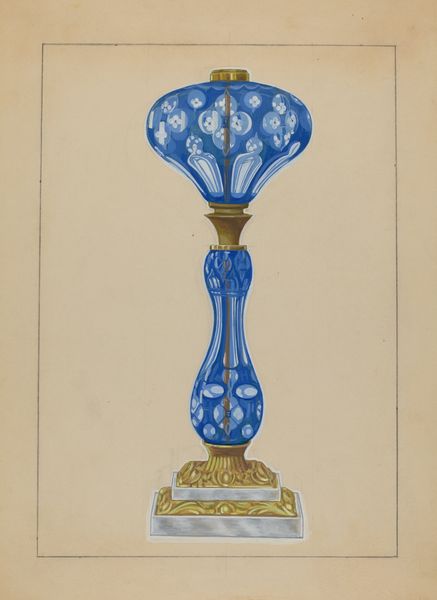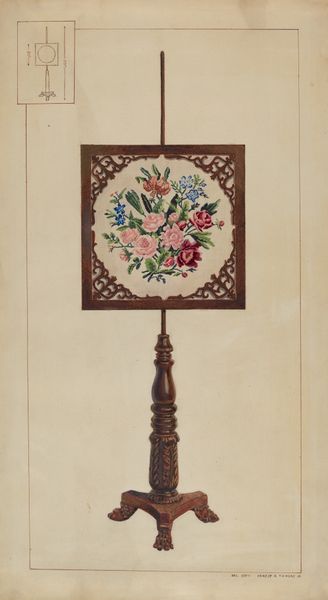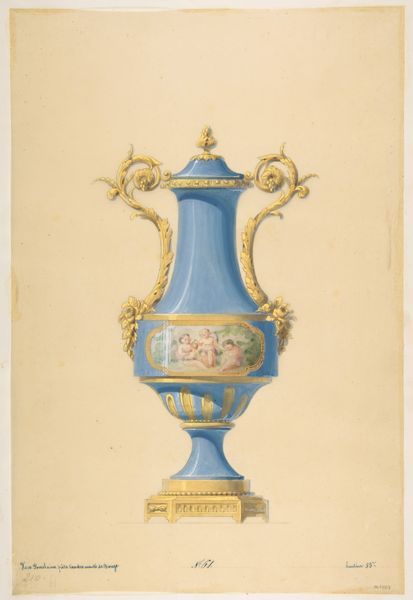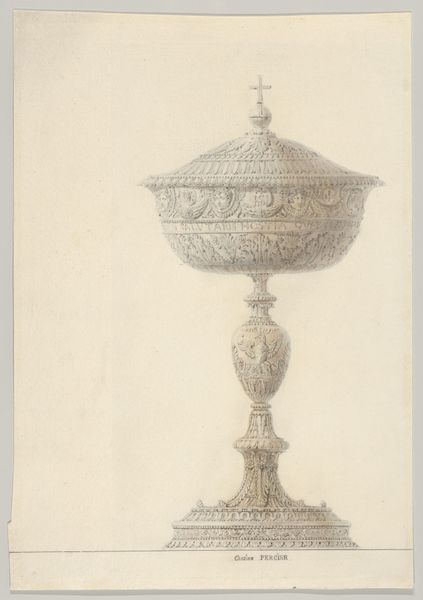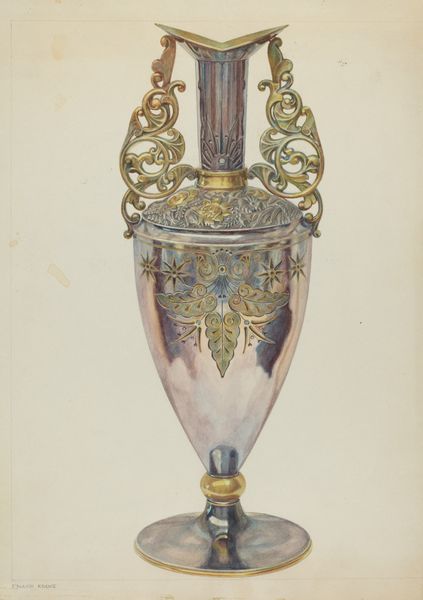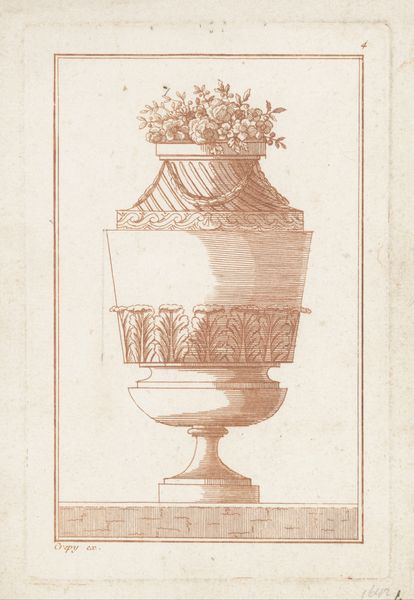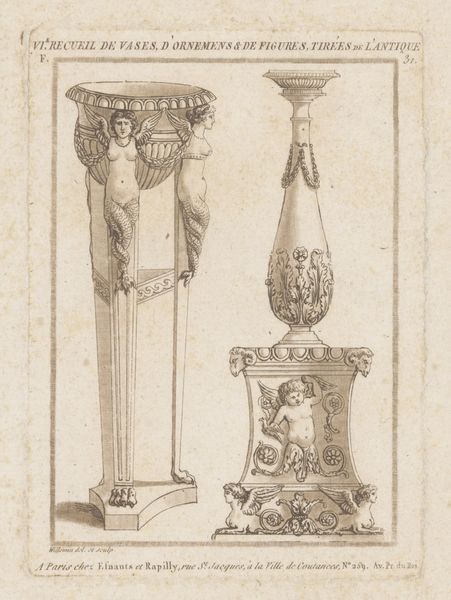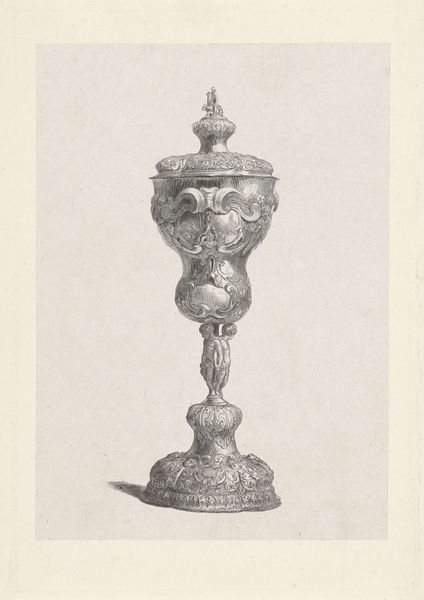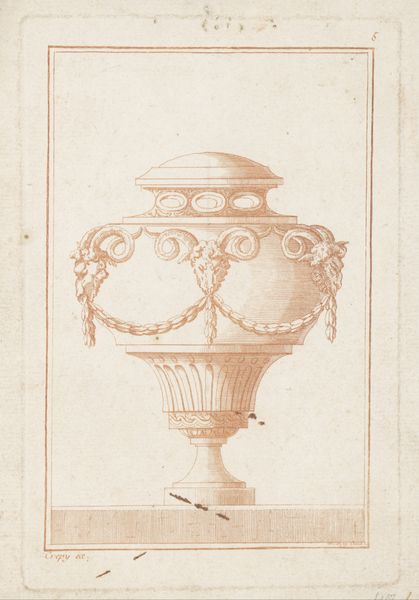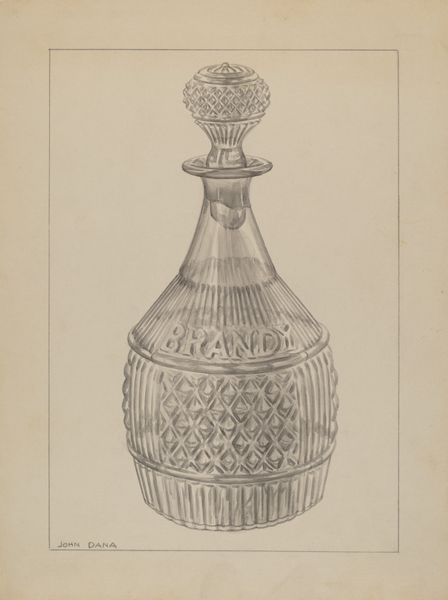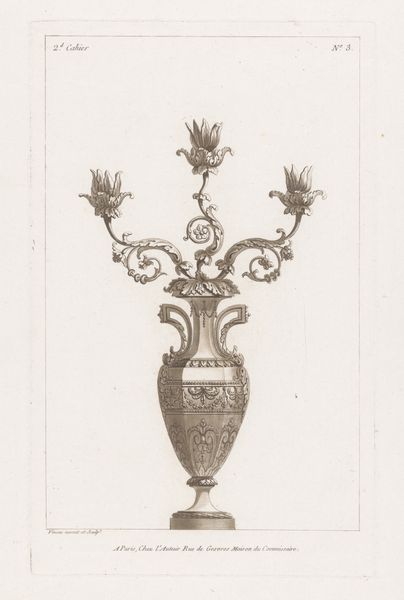
drawing, watercolor
#
drawing
#
watercolor
#
watercolour illustration
#
decorative-art
#
watercolor
Dimensions: overall: 35.5 x 27.9 cm (14 x 11 in.) Original IAD Object: 14 3/8" high; 4 1/2" wide
Copyright: National Gallery of Art: CC0 1.0
Curator: Here we have J. Howard Iams' "Wooden Mantel Ornament," a watercolor drawing dating from around 1936. It offers a detailed design sketch, probably a preparatory work. What strikes you when you first see this piece? Editor: Oh, immediately it’s this peculiar blend of austerity and whimsy. Like a serious object trying very hard not to be! That muted color palette almost fights with the overtly decorative elements, the little floral motifs running all over the surface of the plinth and urn... Curator: It’s intriguing, isn’t it? Especially considering the era it was created in. This was during a period when industrial design was booming. Did Iams intend a subtle critique of mass production by emphasizing hand-done artistry? Or was it merely an exploration of craft? We can examine the techniques involved, from the layering of colors in the watercolor to the meticulous execution of repeating patterns, it begs the question: was Iams pushing against the rigid constraints of industrial aesthetics? Editor: Possibly! I get a sense that Iams delighted in the contrast itself, how different surfaces invite a different type of painting. Maybe it's my personal bias but the piece somehow embodies a quiet, resistant joy; the way beauty can still thrive even amidst, you know, functional seriousness. I like to think of it sitting there on a mantelpiece. Curator: The placement is quite significant, yes. Mantelpieces at this time were architectural cores. What is a hand-crafted drawing depicting ornamental design proposing to the modern industrial domestic interior? Considering that decorative objects often function as signifiers of class and cultural identity, how might Iams engage with notions of craftsmanship and its place within a rapidly changing socioeconomic landscape? Editor: Oh! I'm sort of now wondering: Was the hand craft being elevated as protest, or even nostalgia, by this placement or treatment? Or a tongue-in-cheek wink, perhaps? It certainly invites a lot of speculation. Curator: Absolutely! It showcases design in an age defined by innovation but still anchored by traditional sensibilities of artistic endeavor. The artwork allows for different understandings of decoration and production. Editor: What a curiously charming artifact, then. A little rebellion etched in watercolors and drawings from the 30s! I will carry that warmth and joy with me when viewing other artworks in the collection.
Comments
No comments
Be the first to comment and join the conversation on the ultimate creative platform.
